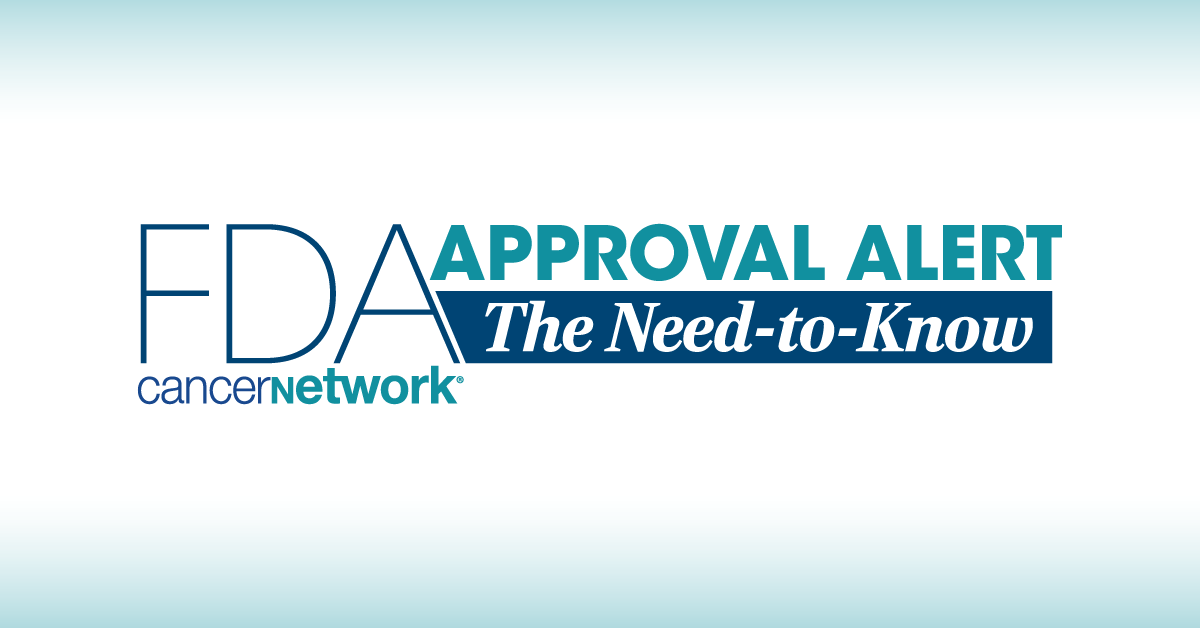FDA Approves Dato-DXd in Metastatic HR+/HER2– Breast Cancer
Data from the TROPION-Breast01 trial support the FDA approval of datopotamab deruxtecan for those with metastatic HR–positive, HER2-negative breast cancer.
The FDA based its decision on findings from the phase 3 TROPION-Breast01 trial (NCT05104866), which assessed treatment with dato-DXd vs investigator’s choice of chemotherapy.

The News
The FDA has approved datopotamab deruxtecan (dato-DXd; Datroway) as a therapy for adults with previously treated unresectable or metastatic hormone receptor (HR)–positive, HER2-negative breast cancer, according to a press release from a release from the FDA.1
Supporting Data
The FDA based its decision on findings from the phase 3 TROPION-Breast01 trial (NCT05104866), which assessed treatment with dato-DXd vs investigator’s choice of chemotherapy. Primary results from the TROPION-Breast01 trial were published in the Journal of Clinical Oncology.2
Based on blinded independent central review (BICR), dato-DXd produced a median progression-free survival (PFS) of 6.9 months (95% CI, 5.7-7.4) compared with 4.9 months (95% CI, 4.2-5.5) using investigator’s choice of chemotherapy (HR, 0.63; 95% CI, 0.52-0.76; P <.0001). In each respective arm, the PFS rates were 37.5% vs 18.7% at 9 months and 25.5% vs 14.6% at 12 months. Data showed consistent benefits with dato-DXd regardless of factors such as prior lines of therapy, geographic region, and prior use of CDK4/6 inhibitors.
Dato-DXd produced an objective response rate (ORR) of 36.4% vs 22.9% in the chemotherapy arm (odds ratio, 1.95; 95% CI, 1.41-2.71). There were 2 (0.5%) complete responses (CRs) in the dato-DXd arm and 0 (0%) in the chemotherapy arm; data showed partial responses (PRs) in 131 (35.9%) and 84 (22.9%), respectively. Additionally, the median duration of response (DOR) was 6.7 months (95% CI, 5.6-9.8) vs 5.7 months (95% CI, 4.9-6.8) in each arm.
Further findings showed that dato-DXd did not produce a statistically significant overall survival (OS) improvement compared with chemotherapy in the TROPION-Breast01 trial.3
TROPION-Breast01 Design
In the international, open-label, phase 3 TROPION-Breast01 trial, 732 patients with inoperable or metastatic HR–positive, HER2-negative breast cancer were randomly assigned 1:1 to receive treatment with dato-DXd (n = 365) or investigator’s choice of chemotherapy (n = 367). Investigators administered dato-DXd at 6 mg/kg intravenously every 3 weeks. Treatment in the comparator arm was one of the following: single-agent eribulin at 1.4 mg/m2 intravenously on days 1 and 8 once every 3 weeks, capecitabine at 1000 or 1250 mg/m2 orally twice daily on days 1 to 14 every 3 weeks, vinorelbine at 25 mg/m2 intravenously on days 1 and 8 every 3 weeks, or gemcitabine at 1000 mg/m2 intravenously on days 1 and 8 every 3 weeks.
The trial’s dual primary end points were PFS per BICR and OS. Secondary end points included investigator-assessed PFS, ORR, disease control rate, DOR, time to first subsequent therapy or death, time to second subsequent therapy or death, time to second progression or death, and safety and tolerability.
Patients 18 years and older with an ECOG performance status of 0 or 1; inoperable or metastatic HR-positive, HER2-negative breast cancer; and 1 or 2 prior lines of chemotherapy in the inoperable or metastatic setting were eligible for enrollment in the trial.
Safety Data
Overall, any-grade treatment-related adverse effects (TRAEs) affected 93.6% of the dato-DXd arm and 86.3% of the chemotherapy arm. The most common any-grade TRAEs in each arm included nausea (51.1% vs 23.6%), stomatitis (50.0% vs 13.1%), alopecia (36.4% vs 20.5%), fatigue (23.6% vs 18.2%), dry eye (21.7% vs 7.7%), and vomiting (19.7% vs 7.7%). Grade 3 or higher TRAEs occurred in 20.8% and 44.7% of patients, respectively, with the most common types including stomatitis in the dato-DXd arm (6.4%) and neutropenia in the chemotherapy arm (30.8%).
Serious TRAEs were reported in 5.8% and 9.1% of patients who received dato-DXd and chemotherapy, respectively. In each respective arm, TRAEs resulted in dose reductions in 20.8% and 30.2%, dose interruptions in 11.9% and 24.5%, and treatment discontinuation in 2.5% and 2.6%. No fatal TRAEs occurred in the dato-DXd arm, although 1 patient in the chemotherapy arm died due to febrile neutropenia.
The FDA accepted a biologics license application for dato-DXd as a treatment for those with unresectable or metastatic HR-positive, HER2-negative breast cancer in April 2024.4
References
- FDA approves datopotamab deruxtecan-dlnk for unresectable or metastatic HR-positive, HER2-negative breast cancer. News release. FDA. January 17, 2025. Accessed January 17, 2025. https://tinyurl.com/3t5xbjnr
- Bardia A, Jhaveri K, Im S-A, et al. Datopotamab deruxtecan versus chemotherapy in previously treated inoperable/metastatic hormone receptor–positive human epidermal growth factor receptor 2–negative breast cancer: primary results from TROPION-Breast01. J Clin Oncol. Published online September 12, 2024. doi:10.1200/JCO.24.00920
- Datopotamab deruxtecan final overall survival results reported in patients with metastatic HR-positive, HER2-low or negative breast cancer in TROPION-Breast01 Phase III trial. News release. AstraZeneca. September 23, 2024. Accessed January 3, 2025. https://tinyurl.com/2ajspppy
- Datopotamab deruxtecan biologics license application accepted in the US for patients with previously treated metastatic HR-positive, HER2-negative breast cancer. News release. AstraZeneca and Daiichi Sankyo. April 2, 2024. Accessed January 3, 2025. https://tinyurl.com/mv3f3wa5